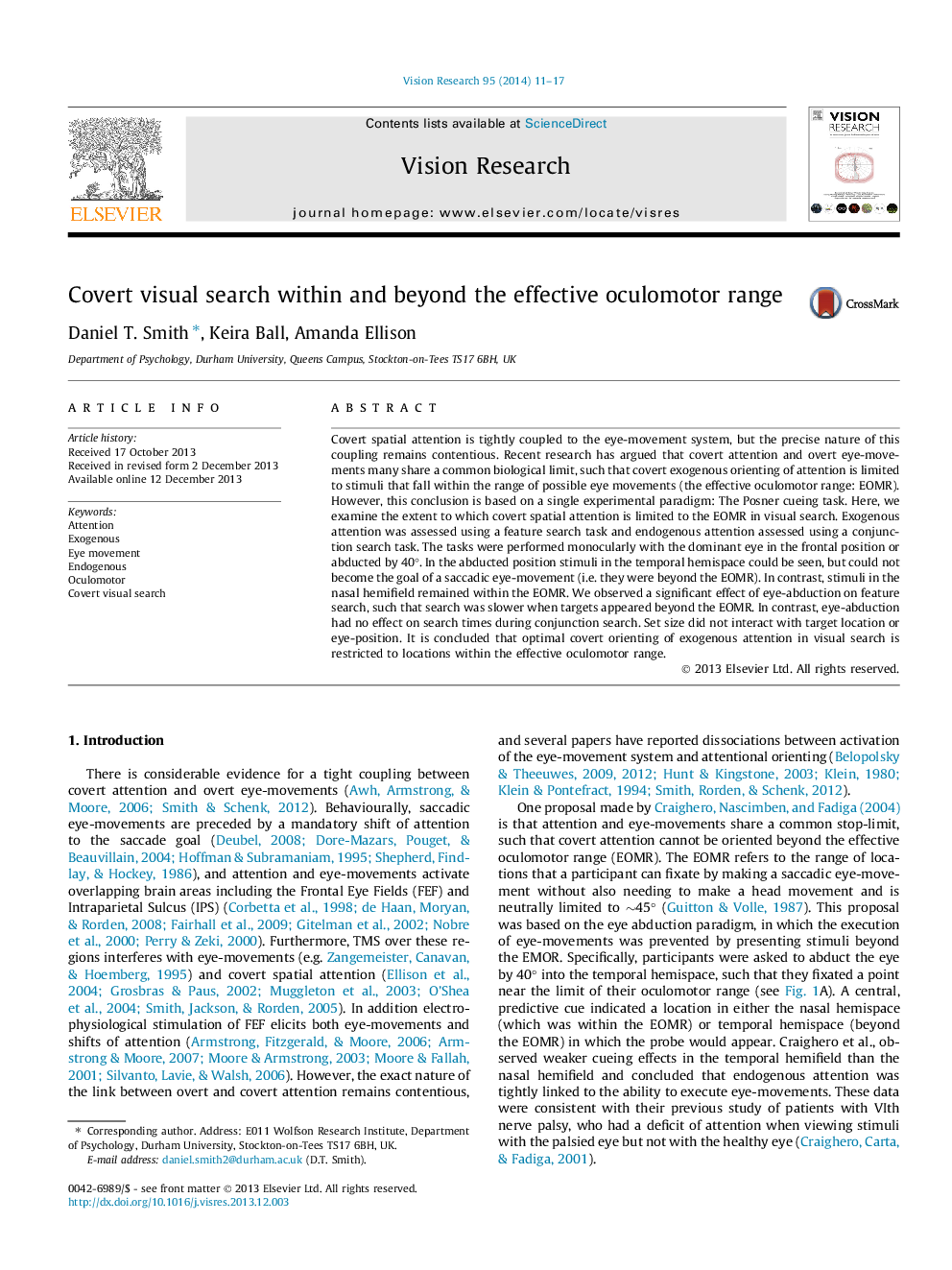| کد مقاله | کد نشریه | سال انتشار | مقاله انگلیسی | نسخه تمام متن |
|---|---|---|---|---|
| 4033732 | 1603199 | 2014 | 7 صفحه PDF | دانلود رایگان |

• We tested oculomotor involvement in covert attention using covert search tasks.
• Eye-abduction disrupts saccade preparation to targets in the temporal hemispace.
• Exogenous orienting into the temporal hemispace was impaired during eye-abduction.
• Endogenous orienting into the temporal hemispace was unaffected by eye-abduction.
• Optimal exogenous orienting limited to the range of possible saccadic eye-movements.
Covert spatial attention is tightly coupled to the eye-movement system, but the precise nature of this coupling remains contentious. Recent research has argued that covert attention and overt eye-movements many share a common biological limit, such that covert exogenous orienting of attention is limited to stimuli that fall within the range of possible eye movements (the effective oculomotor range: EOMR). However, this conclusion is based on a single experimental paradigm: The Posner cueing task. Here, we examine the extent to which covert spatial attention is limited to the EOMR in visual search. Exogenous attention was assessed using a feature search task and endogenous attention assessed using a conjunction search task. The tasks were performed monocularly with the dominant eye in the frontal position or abducted by 40°. In the abducted position stimuli in the temporal hemispace could be seen, but could not become the goal of a saccadic eye-movement (i.e. they were beyond the EOMR). In contrast, stimuli in the nasal hemifield remained within the EOMR. We observed a significant effect of eye-abduction on feature search, such that search was slower when targets appeared beyond the EOMR. In contrast, eye-abduction had no effect on search times during conjunction search. Set size did not interact with target location or eye-position. It is concluded that optimal covert orienting of exogenous attention in visual search is restricted to locations within the effective oculomotor range.
Journal: Vision Research - Volume 95, February 2014, Pages 11–17